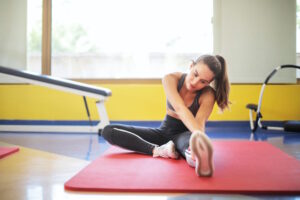
Pilates is a popular exercise method that focuses on building core strength, improving flexibility, and enhancing mind-body connection. It is an excellent choice for beginners who are looking to start their fitness journey or want to incorporate a low-impact workout into their routine. In this comprehensive guide, we will delve into the world of Pilates for beginners, addressing common questions and providing step-by-step instructions to help you get started on your Pilates journey.
Can I start Pilates as a beginner?
Absolutely! Pilates is suitable for people of all fitness levels, including beginners. In fact, Pilates is an ideal choice for those who are new to exercise or have limited experience with fitness routines. One of the great things about Pilates is that it can be tailored to individual needs, allowing beginners to start at their own pace and gradually progress as they build strength and confidence.
What type of Pilates is best for beginners?
When it comes to Pilates, there are various styles and approaches, but for beginners, it is recommended to start with mat-based Pilates. Mat Pilates exercises are performed on a padded mat, using your body weight as resistance. This type of Pilates focuses on core stability, alignment, and controlled movements. It is a cost-effective and convenient option as it can be practiced at home or in a studio with minimal equipment.
What to expect from an introduction to Pilates?
When you begin your Pilates journey, you can expect to learn the fundamental principles and basic exercises that form the foundation of the practice. Your instructor will guide you through proper alignment, breathing techniques, and core engagement. You will gradually progress through a series of exercises that target different muscle groups, helping you develop strength, flexibility, and body awareness.
In an introduction to Pilates, you will also learn about the mind-body connection that is at the core of the Pilates philosophy. Pilates encourages focus, concentration, and mindfulness during the movements, allowing you to connect with your body and develop a deeper understanding of its capabilities.
How to do Pilates step by step?
Step 1: Warm-up and Breathing Begin your Pilates session with a gentle warm-up to prepare your body. Focus on deep breathing, inhaling through the nose and exhaling through the mouth. This helps to oxygenate the muscles and promotes relaxation.
Step 2: Core Activation Engage your core muscles by drawing your navel toward your spine. This activates the deep abdominal muscles, providing stability and support throughout the exercises.
Step 3: Alignment and Posture Maintain proper alignment throughout your Pilates practice. Lengthen your spine, relax your shoulders, and keep your body in a neutral position. Good posture is essential for effective and safe Pilates movements.
Step 4: Controlled Movements Pilates emphasizes controlled and precise movements. Focus on quality rather than quantity. Perform each exercise with control, paying attention to form, alignment, and muscle engagement.
Step 5: Gradual Progression Start with basic exercises and gradually progress to more challenging movements as your strength and flexibility improve. It’s important to listen to your body and not push yourself beyond your limits.
In this comprehensive guide to Introduction to Pilates for Beginners, we discussed the suitability of Pilates for beginners, the best type of Pilates for newcomers, what to expect from an introduction to Pilates, and provided a step-by-step approach to practicing Pilates. Starting Pilates as a beginner is highly encouraged, and mat-based Pilates is the recommended starting point. In an introduction to Pilates, you will learn the foundational principles and basic exercises, while developing core strength, flexibility, and body awareness. By following the step-by-step instructions, including warm-up, core activation, alignment, controlled movements, and gradual progression, you can embark on a rewarding Pilates journey and experience the numerous benefits it offers.